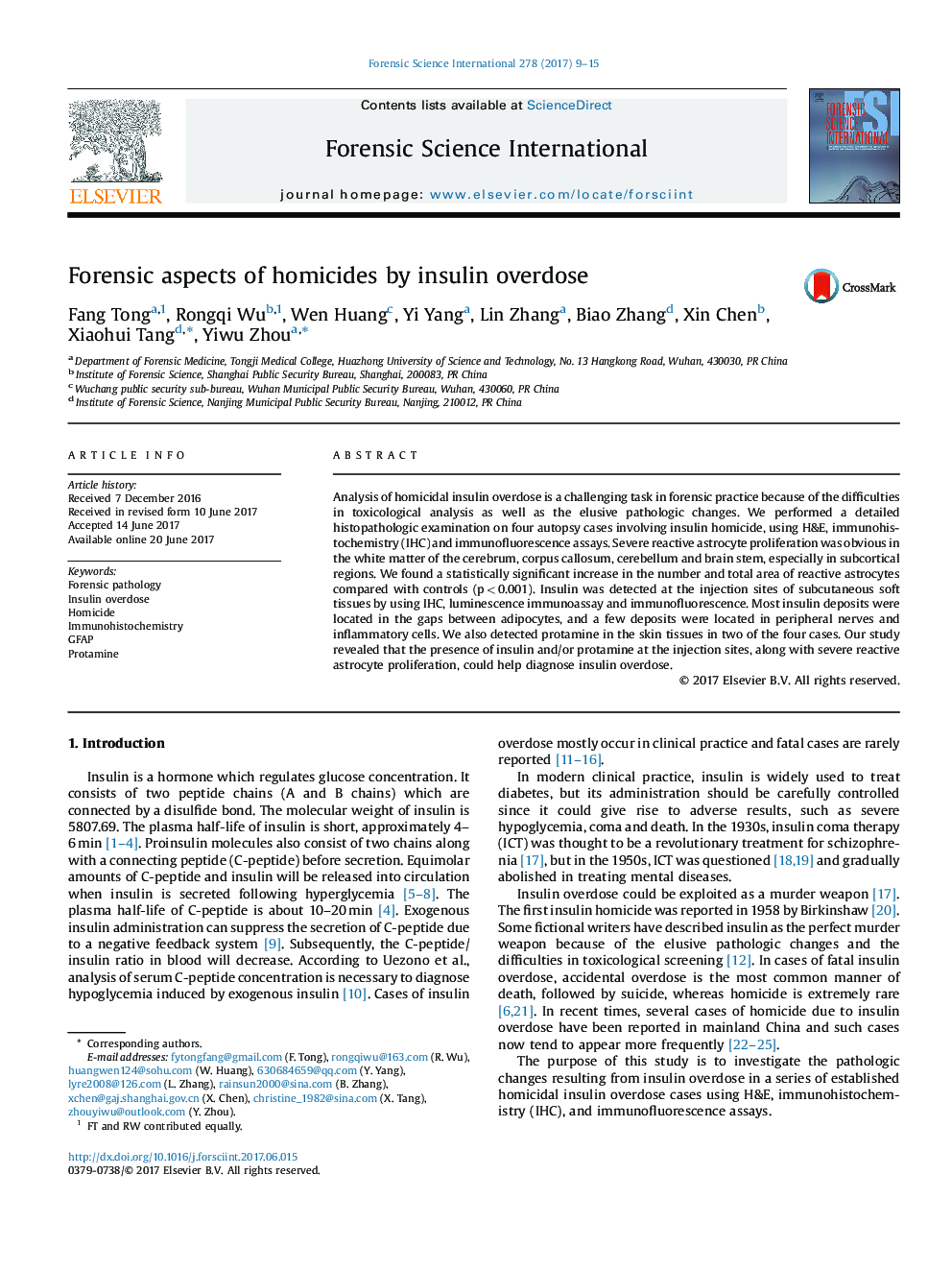| کد مقاله | کد نشریه | سال انتشار | مقاله انگلیسی | نسخه تمام متن |
|---|---|---|---|---|
| 6462182 | 1421972 | 2017 | 7 صفحه PDF | دانلود رایگان |
- This article is about research consisted of 4 actual homicidal insulin overdose cases.
- In acute overdose, neuropathologic changes are not as typical as in previous hypoglycemic studies.
- Severe reactive astrocyte proliferation with GFAP IHC is conspicuously found in brains of insulin overdose.
- Presence of insulin and protamine at the injection sites is of forensic significance.
Analysis of homicidal insulin overdose is a challenging task in forensic practice because of the difficulties in toxicological analysis as well as the elusive pathologic changes. We performed a detailed histopathologic examination on four autopsy cases involving insulin homicide, using H&E, immunohistochemistry (IHC) and immunofluorescence assays. Severe reactive astrocyte proliferation was obvious in the white matter of the cerebrum, corpus callosum, cerebellum and brain stem, especially in subcortical regions. We found a statistically significant increase in the number and total area of reactive astrocytes compared with controls (p < 0.001). Insulin was detected at the injection sites of subcutaneous soft tissues by using IHC, luminescence immunoassay and immunofluorescence. Most insulin deposits were located in the gaps between adipocytes, and a few deposits were located in peripheral nerves and inflammatory cells. We also detected protamine in the skin tissues in two of the four cases. Our study revealed that the presence of insulin and/or protamine at the injection sites, along with severe reactive astrocyte proliferation, could help diagnose insulin overdose.
Journal: Forensic Science International - Volume 278, September 2017, Pages 9-15
